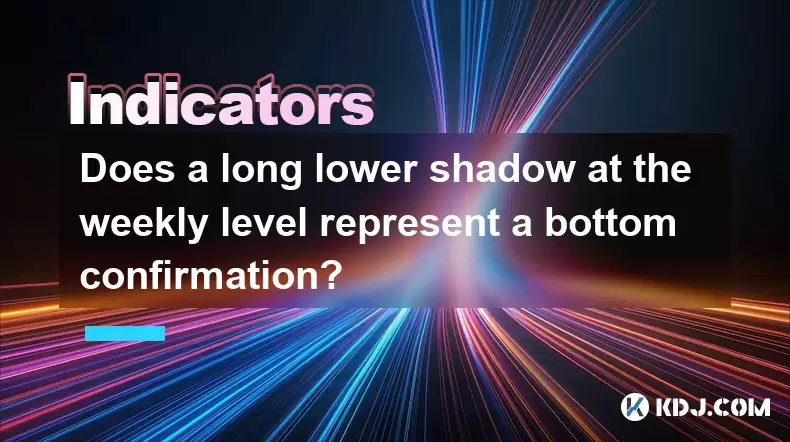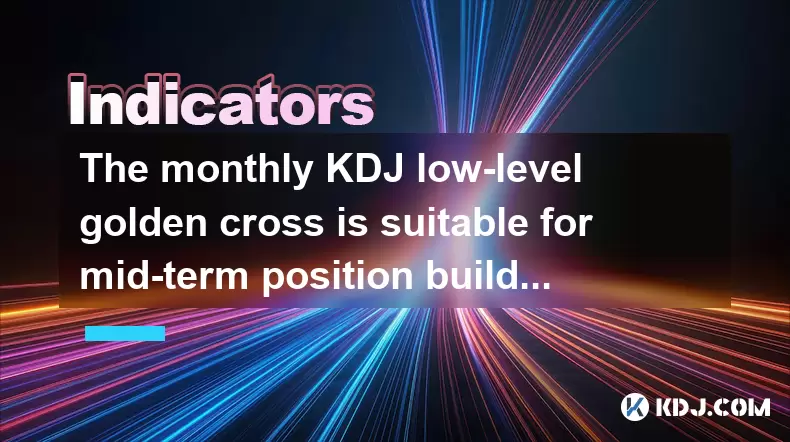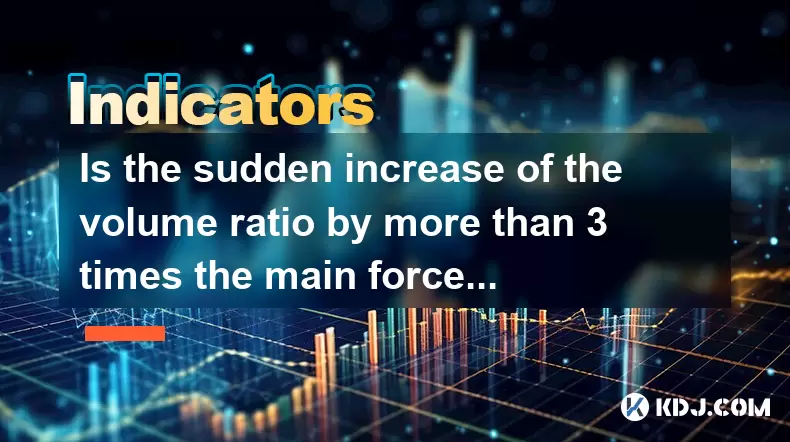-
 Bitcoin
Bitcoin $107,323.9971
-0.42% -
 Ethereum
Ethereum $2,442.7415
-1.58% -
 Tether USDt
Tether USDt $1.0005
0.00% -
 XRP
XRP $2.0902
-4.49% -
 BNB
BNB $645.3561
-0.33% -
 Solana
Solana $140.8832
-2.81% -
 USDC
USDC $0.9999
0.01% -
 TRON
TRON $0.2713
0.17% -
 Dogecoin
Dogecoin $0.1611
-2.35% -
 Cardano
Cardano $0.5556
-2.75% -
 Hyperliquid
Hyperliquid $36.8045
-1.10% -
 Bitcoin Cash
Bitcoin Cash $494.4393
-1.23% -
 Sui
Sui $2.6406
-2.97% -
 Chainlink
Chainlink $13.0846
-1.74% -
 UNUS SED LEO
UNUS SED LEO $9.0127
0.09% -
 Avalanche
Avalanche $17.4023
-1.37% -
 Stellar
Stellar $0.2339
-3.25% -
 Toncoin
Toncoin $2.8330
-0.57% -
 Shiba Inu
Shiba Inu $0.0...01124
-3.38% -
 Litecoin
Litecoin $84.9229
-0.60% -
 Hedera
Hedera $0.1432
-3.84% -
 Monero
Monero $311.0740
-1.35% -
 Bitget Token
Bitget Token $4.6591
3.94% -
 Dai
Dai $1.0001
0.01% -
 Ethena USDe
Ethena USDe $1.0000
-0.01% -
 Polkadot
Polkadot $3.3033
-1.64% -
 Uniswap
Uniswap $6.9221
-4.55% -
 Pi
Pi $0.5546
-4.86% -
 Aave
Aave $257.5046
-1.30% -
 Pepe
Pepe $0.0...09215
-3.26%
How sustainable is the rebound of the lower track of the Bollinger band?
The lower Bollinger Band often signals short-term support in crypto, but reliable reversals require confirmation from volume, momentum, and market context.
Jun 27, 2025 at 10:01 am

Understanding the Bollinger Band and Its Lower Track
The Bollinger Band is a widely used technical analysis tool in cryptocurrency trading, composed of a moving average (usually 20 periods) and two standard deviation lines plotted above and below it. The lower track, or lower Bollinger Band, represents a level that is typically two standard deviations below the moving average.
In crypto markets, which are known for their high volatility, the price often touches or even breaks through the lower Bollinger Band during sharp sell-offs. This event can signal oversold conditions or panic selling. However, the key question is whether this touch leads to a sustainable rebound or if it's merely a temporary bounce before further decline.
Important Note: A touch of the lower band alone is not sufficient to predict a reversal. It must be analyzed alongside volume, momentum indicators, and candlestick patterns.
Historical Behavior of Price Near the Lower Bollinger Band
Cryptocurrency price charts over multiple cycles have shown that when prices hit the lower Bollinger Band, they often experience a short-term rebound. For example, during Bitcoin’s crash in mid-2022, the price touched the lower band several times, each time followed by a brief recovery.
However, these rebounds were not always sustained. In some cases, especially during strong downtrends, the price would retest the lower band after a small bounce, leading to further downside. This suggests that while the lower Bollinger Band can act as a support zone, its reliability depends heavily on broader market sentiment and trend strength.
- During bear markets, repeated tests of the lower band may indicate continued weakness rather than support.
- In ranging markets, touching the lower band often results in stronger and more predictable bounces.
- In sideways consolidations, the lower band acts as a dynamic support that traders use to enter long positions.
Factors That Influence the Sustainability of a Rebound
Several factors determine whether a rebound from the lower Bollinger Band will hold or fail:
- Momentum divergence: If the price makes a new low but the RSI or MACD does not, it could suggest hidden strength and a potential sustainable bounce.
- Volume confirmation: A surge in volume during or after the touch of the lower band increases the probability of a genuine reversal.
- Market structure context: Whether the price is near previous support levels, Fibonacci retracements, or psychological round numbers plays a role in determining sustainability.
- Timeframe dependency: Shorter timeframes like 1-hour or 4-hour charts may show frequent false signals, whereas daily or weekly touches tend to carry more weight.
For instance, Ethereum’s price in early 2023 saw a confluence of support levels aligning with the lower Bollinger Band, accompanied by bullish divergence on the RSI. This led to a multi-week rally that validated the bounce.
How to Trade a Rebound Off the Lower Bollinger Band
Trading a rebound requires a structured approach to filter out false signals and avoid entering prematurely. Here’s a step-by-step guide:
- Identify the touchpoint: Wait until the price clearly touches or closes near the lower band.
- Check for confluence: Look for overlapping support zones such as horizontal support, trendlines, or Fibonacci levels.
- Analyze momentum indicators: Confirm with RSI, MACD, or Stochastic for signs of reversal.
- Monitor volume spikes: A sudden increase in volume during the bounce adds credibility to the move.
- Enter with a stop-loss: Place a stop just below the recent swing low to manage risk effectively.
- Set realistic targets: Use the middle Bollinger Band or prior resistance levels as initial profit-taking zones.
Using this strategy, traders can increase their odds of capturing sustainable moves rather than getting caught in whipsaw traps.
Common Misconceptions About the Lower Bollinger Band
Many novice traders fall into the trap of treating the lower Bollinger Band as a guaranteed buy zone. This misunderstanding leads to premature entries and losses during strong downtrends.
- Myth: Every touch of the lower band is a buying opportunity – Reality: In trending markets, the lower band often acts as a resistance after a breakdown.
- Myth: The price always returns to the middle band after touching the lower band – Reality: There’s no law enforcing this; it depends on market dynamics.
- Myth: Bollinger Bands work equally well on all assets – Reality: Cryptocurrencies have different volatility profiles compared to stocks or forex, requiring customization.
Understanding these misconceptions helps traders avoid costly mistakes when interpreting signals from the lower Bollinger Band.
Frequently Asked Questions
Q: Can I use Bollinger Bands alone to make trading decisions?
A: While Bollinger Bands are powerful, relying solely on them can lead to false signals. Combining them with other tools like RSI, volume, and chart patterns improves accuracy.
Q: Should I adjust the settings of Bollinger Bands for cryptocurrency trading?
A: Yes. The default setting of 20 periods and 2 standard deviations may not suit all cryptocurrencies. Traders often tweak the period length or multiplier based on asset volatility.
Q: What happens when the price stays below the lower Bollinger Band for an extended period?
A: Prolonged stays under the lower band indicate extreme bearishness. This scenario usually precedes either a significant reversal or a continuation of the downtrend, depending on underlying fundamentals and macro conditions.
Q: Is there a difference between using Bollinger Bands on spot versus futures markets?strong>
A: Yes. Futures markets include funding rates and leverage effects that can cause sharper and more erratic price swings, potentially making Bollinger Band signals less reliable without additional filters.
Disclaimer:info@kdj.com
The information provided is not trading advice. kdj.com does not assume any responsibility for any investments made based on the information provided in this article. Cryptocurrencies are highly volatile and it is highly recommended that you invest with caution after thorough research!
If you believe that the content used on this website infringes your copyright, please contact us immediately (info@kdj.com) and we will delete it promptly.
- TRUMP Token Tumult: Liquidity Exit Sparks Crash Fears!
- 2025-06-27 12:30:12
- Thanking Strangers for Loans: From Etiquette to Crypto Innovations
- 2025-06-27 14:10:18
- Elementary, My Dear Collector: Sherlock Holmes Coins Fetch High Prices!
- 2025-06-27 12:35:12
- Sui Growth: Blockchain Ecosystem Expansion in 2025
- 2025-06-27 12:47:14
- Coinbase Stock Soars to New Highs: Is the Rally Sustainable?
- 2025-06-27 12:47:14
- Coinbase Stock Soars to New Highs: What's Driving the Rally?
- 2025-06-27 13:10:17
Related knowledge

Does the CCI indicator break through +200 mean that it is seriously overbought?
Jun 27,2025 at 01:08pm
Understanding the CCI Indicator and Its Relevance in Cryptocurrency TradingThe Commodity Channel Index (CCI) is a technical analysis tool widely used by traders in various financial markets, including cryptocurrency. Originally developed by Donald Lambert for commodities, it has since been adopted across asset classes to identify overbought or oversold ...

Is it necessary to reduce the position when the KDJ indicator forms a dead cross in the overbought area?
Jun 27,2025 at 02:28pm
Understanding the KDJ Indicator and Its Role in Cryptocurrency TradingThe KDJ indicator is a momentum oscillator widely used in technical analysis, especially within cryptocurrency trading. It consists of three lines: the K-line, D-line, and J-line, which help traders identify overbought and oversold conditions. In crypto markets, where volatility is hi...

How lethal is the death cross of EXPMA12 and 50 lines?
Jun 27,2025 at 11:15am
Understanding the Death Cross in EXPMA IndicatorsThe death cross is a technical analysis pattern that signals a potential bearish trend reversal. In the context of the EXPMA (Exponential Moving Average), particularly when analyzing the crossover between the EXPMA12 and EXPMA50 lines, traders often interpret this as a strong sell signal. The death cross ...

Does a long lower shadow at the weekly level represent a bottom confirmation?
Jun 27,2025 at 10:56am
Understanding the Weekly Lower Shadow in Candlestick AnalysisIn cryptocurrency trading, weekly candlestick patterns are often scrutinized for potential trend reversals. A long lower shadow at the weekly level indicates that during the week, sellers pushed prices down significantly but were met with strong buying pressure that closed the candle near its ...

The monthly KDJ low-level golden cross is suitable for mid-term position building?
Jun 27,2025 at 03:14am
Understanding the Monthly KDJ IndicatorThe KDJ indicator, also known as the stochastic oscillator, is a momentum tool widely used in technical analysis within the cryptocurrency market. It consists of three lines: the K line, the D line, and the J line. These lines help traders identify overbought or oversold conditions, potential trend reversals, and e...

Is the sudden increase of the volume ratio by more than 3 times the main force entering the market?
Jun 27,2025 at 12:57pm
Understanding Volume Ratio in Cryptocurrency TradingIn cryptocurrency trading, the volume ratio refers to the comparison between the current trading volume and the average volume over a specific period, usually 20 or 30 days. This metric helps traders identify unusual market activity that could signal potential price movements. When the volume ratio inc...

Does the CCI indicator break through +200 mean that it is seriously overbought?
Jun 27,2025 at 01:08pm
Understanding the CCI Indicator and Its Relevance in Cryptocurrency TradingThe Commodity Channel Index (CCI) is a technical analysis tool widely used by traders in various financial markets, including cryptocurrency. Originally developed by Donald Lambert for commodities, it has since been adopted across asset classes to identify overbought or oversold ...

Is it necessary to reduce the position when the KDJ indicator forms a dead cross in the overbought area?
Jun 27,2025 at 02:28pm
Understanding the KDJ Indicator and Its Role in Cryptocurrency TradingThe KDJ indicator is a momentum oscillator widely used in technical analysis, especially within cryptocurrency trading. It consists of three lines: the K-line, D-line, and J-line, which help traders identify overbought and oversold conditions. In crypto markets, where volatility is hi...

How lethal is the death cross of EXPMA12 and 50 lines?
Jun 27,2025 at 11:15am
Understanding the Death Cross in EXPMA IndicatorsThe death cross is a technical analysis pattern that signals a potential bearish trend reversal. In the context of the EXPMA (Exponential Moving Average), particularly when analyzing the crossover between the EXPMA12 and EXPMA50 lines, traders often interpret this as a strong sell signal. The death cross ...

Does a long lower shadow at the weekly level represent a bottom confirmation?
Jun 27,2025 at 10:56am
Understanding the Weekly Lower Shadow in Candlestick AnalysisIn cryptocurrency trading, weekly candlestick patterns are often scrutinized for potential trend reversals. A long lower shadow at the weekly level indicates that during the week, sellers pushed prices down significantly but were met with strong buying pressure that closed the candle near its ...

The monthly KDJ low-level golden cross is suitable for mid-term position building?
Jun 27,2025 at 03:14am
Understanding the Monthly KDJ IndicatorThe KDJ indicator, also known as the stochastic oscillator, is a momentum tool widely used in technical analysis within the cryptocurrency market. It consists of three lines: the K line, the D line, and the J line. These lines help traders identify overbought or oversold conditions, potential trend reversals, and e...

Is the sudden increase of the volume ratio by more than 3 times the main force entering the market?
Jun 27,2025 at 12:57pm
Understanding Volume Ratio in Cryptocurrency TradingIn cryptocurrency trading, the volume ratio refers to the comparison between the current trading volume and the average volume over a specific period, usually 20 or 30 days. This metric helps traders identify unusual market activity that could signal potential price movements. When the volume ratio inc...
See all articles























































































